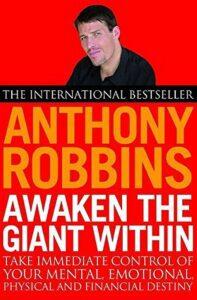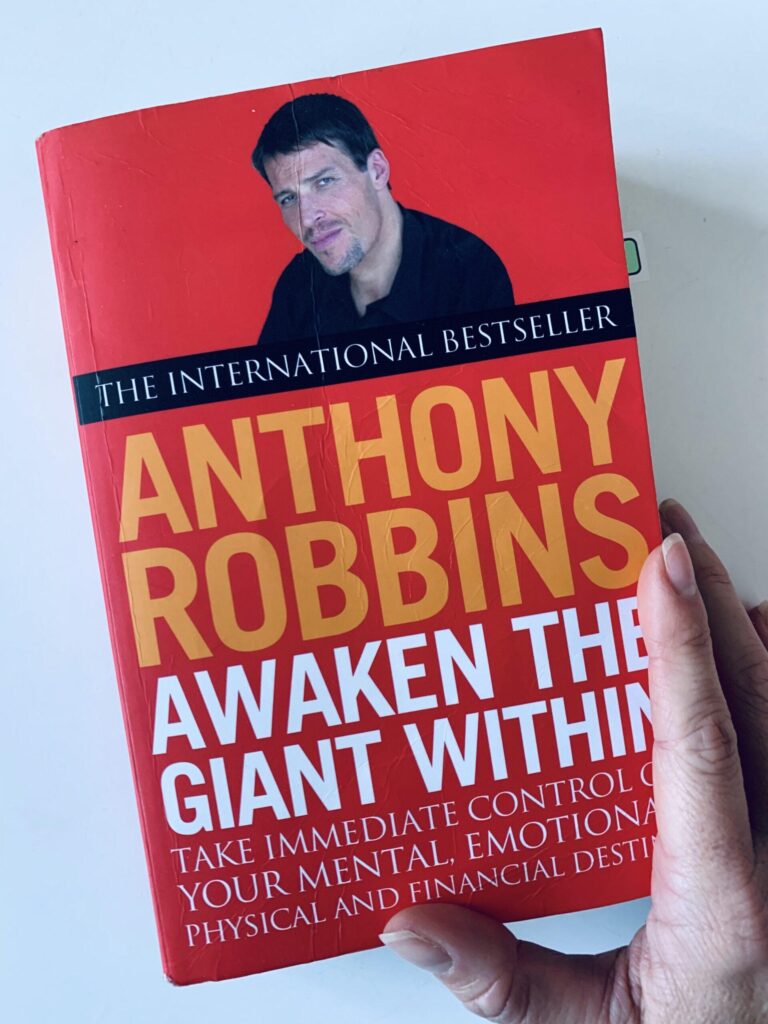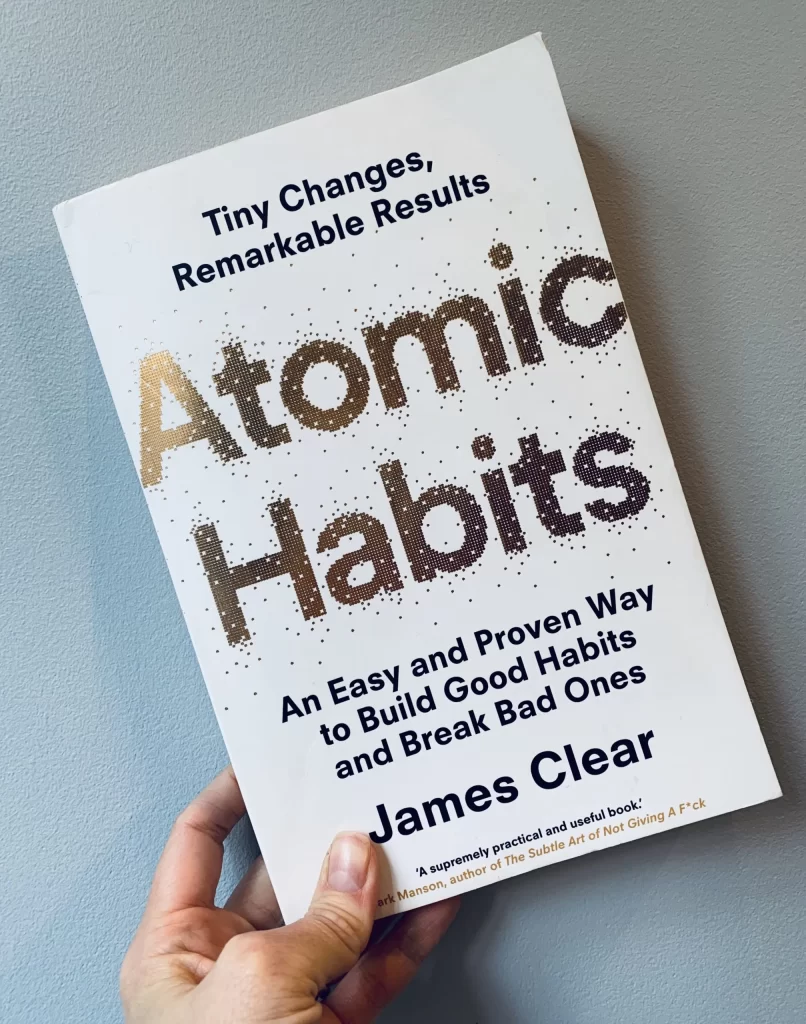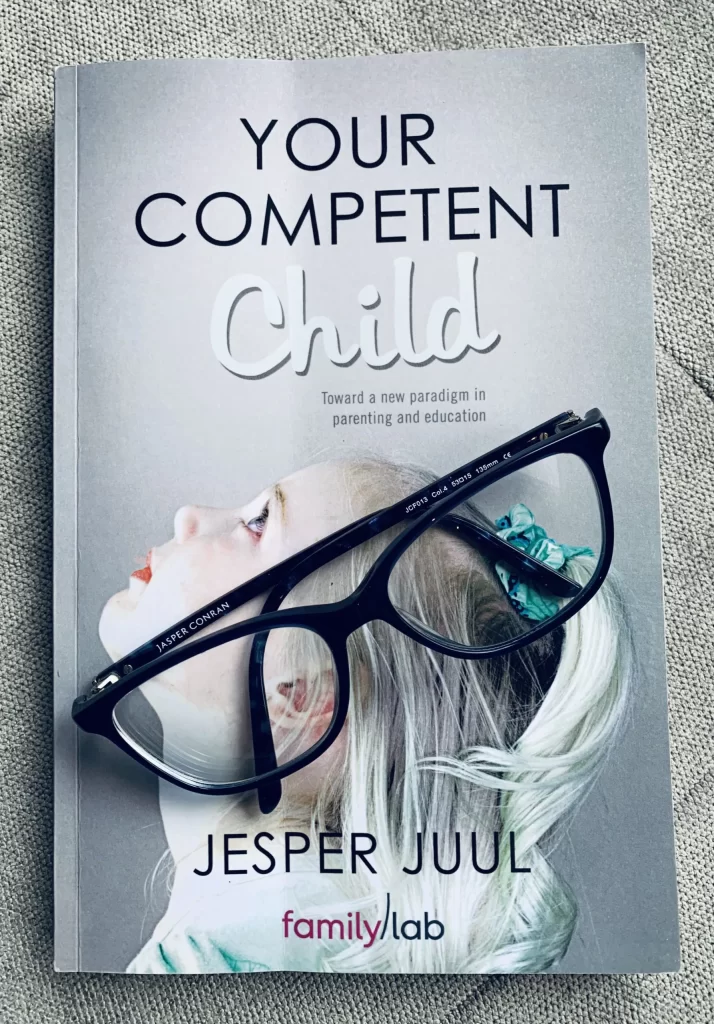 Awaken The Giant Within. Book Summary
Awaken The Giant Within. Book Summary
Take Immediate Control of Your Mental, Emotional, Physical and Financial Destiny
Anthony Robbins
Simon & Schuster Ltd (2001)
About the book:
“For changes to be of any true value, they’ve got to be lasting and consistent. We’ve all experienced change for a moment, only to feel let down and disappointed in the end. In fact, many people attempt change with a sense of fear and dread because unconsciously they believe the changes will only be temporary. […] For most of my life I’ve pursued what I consider to be the organizing principles of lasting change, and you’ll learn many of these and how to utilize them in the pages that follow. But for now, I’d like to share with you three elementary principles of change that you and I can use immediately to change our lives. While these principles are simple, they are also extremely powerful when they are skillfully applied. These are the exact same changes that an individual must make in order to maximize its potential, and that a country must make in order to carve out its place in the world. In fact, as a world community these are the changes that we all must make to preserve the quality of life around the globe.
Step one. Raise your standards. […]
Step two. Change your Limiting Beliefs […]
Step three. Change your Strategy. […]
This book will provide you with the information and impetus to commit to all three of these master principles of quality change: it will help you raise your standards by discovering what they currently are and realizing what you want them to be; it will help you change the core beliefs that are keeping you from where you want to go and enhance those that already serve you; and it will assist you in developing a series of strategies for more elegantly, quickly, and efficiently producing the results you desire.”
I’ve stumbled upon an incredible book that’s truly inspiring, written by one of the giants in the personal growth arena—Tony Robbins. This guy has been a game-changer, motivating countless people towards self-improvement and unlocking their potential for massive success.
After catching a few of his YouTube talks (seriously, he’s an amazing speaker!), I delved into his book, Awaken the Giant Within, and I couldn’t tear myself away from it.
But let me tell you, this isn’t your typical self-help book. It’s a powerful call to action, pushing us to break free from comfort zones, challenge our beliefs, and tap into the boundless potential within us. It’s a reminder that our choices pave the way to the lives we dream of.
Overflowing with inspiring stories and practical tools, it’s a game-changer in unleashing human potential. I absolutely loved it and strongly recommend it to anyone passionate about personal growth.
I’m excited to share my favourite ideas with you, so let’s dive right in!
P.S.: This book has been around for over thirty years, and it’s pretty interesting to see how many newer self-help authors like James Clear and Marie Forleo were inspired by the ideas in this book.
Key insights:
Harness The Power of Decision
“In essence, if we want to direct our lives, we must take control of our consistent actions. It’s not what we do once in a while that shapes our lives, but what we do consistently. The key and the most important question, then, is: What precedes all of our actions? What determines what actions we take, and therefore, who we become, and what our ultimate destination is in life? What is the father of action?
The answer, of course, is what I’ve been alluding to all along: the power of decision. Everything that happens in your life – both what you’re thrilled with and what you’re challenged by – began with a decision. I believe that it’s in your moments of decision that your destiny is shaped. The decisions that you’re making right now, every day, will shape how you feel today as well as who you’re going to become in the nineties and beyond.”
Tony highlights how vital conscious decision-making is. He stresses that we aren’t mere spectators in our own lives; rather, we hold the power to craft our futures by making intentional choices. By acknowledging our ability to select our thoughts, emotions, and actions, we can break away from external limitations and pave our paths toward success.
This brings to mind Darren Hardy’s wisdom from The Compound Effect:
“In essence, you make your choices, and then your choices make you.”
Tony emphasizes three decisions that control our destiny:
1. Your decisions about what to focus on.
2. Your decisions about what things mean to you.
3. Your decisions about what to do to create the results you desire.
Reflect on that for a moment.
Now. Tony points out that the hardest part of achieving anything is making a true commitment – a true decision. The key here lies in practising conscious decision-making: make decisions often, learn from each of them, and enjoy making decisions (more on that later). Additionally, we must remain committed to our decisions while being flexible in our approach.
Here is also a reminder from Nathaniel Branden’s book The Six Pillars of Self-Esteem:
“I am responsible for my choices and actions. To be ‘responsible’ in this context means responsible not as the recipient of moral blame or guilt, but responsible as the chief causal agent in my life and behavior.”
Question for you – how are your decision-making skills?
That leads us to the next insight.
The Force That Shapes Your Life
“…there is undoubtedly a single driving force behind all human behavior. This force impacts every facet of our lives, from our relationships and finances to our bodies and brains. What is this force that is controlling you even now and will continue to do so for the rest of your life? PAIN and PLEASURE! Everything you and I do, we do either out of our need to avoid pain or our desire to gain pleasure.”
Oh yes. That concept got me thinking. It’s so basic yet incredibly impactful. It sheds light on how we can sustain motivation and create lasting change in our lives.
If we associate intense pain with a behaviour or emotional pattern, we’ll do whatever it takes to avoid it. For instance, forming a morning running habit can be an uphill battle if we dread waking up at 5 am and leaving our comfy bed for a cold, dark park. It’s not merely the pain; it’s the fear of encountering that pain.
On the flip side, if we link an action to pleasure (or believe it leads to pleasure), we’re more likely to pursue it. Take my morning runs: I see them as a potent kickstart to the day – knowing I’ll feel energized, strong, and unstoppable. I cherish watching the sunrise and diving into my favourite podcasts during those runs.
Tony mentions that we can harness this pain-and-pleasure force to transform virtually anything in our lives:
“The truth is that we can learn to condition our minds, bodies, and emotions to link pain or pleasure to whatever we choose. By changing what we link pain and pleasure to, we will instantly change our behavior.”
We’ll dive deeper into this a bit later.
P.S.: This concept is at the heart of James Clear’s Habit Loop in Atomic Habits – check it out!
Your Belief System is Everything
“You see, it’s never the environment; it’s never the events of our lives, but the meaning we attach to the events – how we interpret them – that shapes who we are today and who we’ll become tomorrow. Beliefs are what make the difference between a lifetime of joyous contribution and one of misery and devastation. […]
Beliefs have the power to create and the power to destroy.”
Every self-help writer, from Marie Forleo and Jim Kwick to Carol Dweck and Martin Seligman, talk A LOT about the impact of our beliefs. These beliefs are deeply entrenched in how we make sense of our life experiences.
Question for you: which beliefs hold you back from achieving your life goals? Have a think and write down your top 3 limiting beliefs.
Now, the good part? Any belief is changeable. Here is how: 1) Start associating massive pain with the old disempowering belief; 2) Begin questioning that belief – introduce doubt; 3) Swap it with a new empowering belief; 4) Cement the new belief through repetition and conditioning.
That brings us to the next insight.
How to Change Anything in Your Life
“NAC [the Science of Neuro-Associative Conditioning™] is a step-by-step process that can condition your nervous system to associate pleasure to those things you want to continuously move forward and pain to those things you need to avoid in order to succeed consistently in your life without constant effort or willpower.”
Tony has built his NAC tool on the core principles of Neuro-Linguistic Programming (NLP). Imagine our minds as sophisticated computers. NAC functions as an update we can run whenever we decide to tweak either our emotional responses or behaviours.
The initial step is preparing ourselves for change, grounded in three fundamental beliefs: 1) we must believe something must change; 2) we must believe that we must change it – we have to see ourselves as the source of change; 3) we must believe we can change.
Then follow this roadmap:
- Decide what you really want and what’s preventing you from having it now.
- Get leverage: associate massive pain to not changing now and massive pleasure to the experience of changing now. Tony nails it with this reminder: “Knowing that you have failed to live up to your own standards for your life is the ultimate pain.” Phil Stutz shares a fantastic tool for that in The Tools.
- Interrupt the limiting pattern. A simple way to do it is by scrambling the sensations we link to our memories: a) see the situation in your mind that was bothering you so much; b) take the same experience and turn it into a cartoon; c) now think about the situation that was bothering you, and notice how you feel now.
- Create a new, empowering alternative.
- Condition the new pattern until it’s consistent. The secret? Associate strong emotions with this new pattern and immediately reinforce the new behaviour each time it occurs (the law of reinforcement). Use your imagination – replay this new pattern in your mind repeatedly, visualizing success.
- Test it!
Now it’s your turn – what’s the top thing you’d like to change in your life at this moment?
P.S.: This approach resembles the science-proved WOOP technique in Gabriel Oettinger’s amazing book, Rethinking Positive Thinking – check it out!
Change Your States, and You Will Change Your Life
“You can now change your state in so many ways, and they’re all so simple. You can change your physiology immediately just by changing your breathing. You can change your focus by deciding what to focus on, or the order of things you focus on, or how you do it. You can change your submodalities. If you’ve been consistently focusing on the worst that could happen, there’s no excuse for continuing to do that. Start now and focus on the best.”
Our behaviour is deeply influenced by our current mental or physical state. To foster lasting change and growth, we must master the art of shifting our state whenever we fall into negative patterns.
Tony keeps reminding us about the incredible power of our focus – “Whatever we focus on becomes our idea of reality.” So, it’s crucial to master the skill of shifting our focus from negative to positive. Here are a few strategies (more in the book):
We need to learn how to make ourselves feel good.
In other words, how to move from pain to pleasure. In Positive Psychology terms, it’s about generating more positive emotions. Go for a walk, listen to uplifting music, write a gratitude journal, perform acts of kindness, meditate – anything that evokes those top 10 positive emotions.
Ask the right questions.
As Tony emphasises: “Quality questions create a quality life.” Be curious and ask quality questions consistently. For instance, swap ‘Why me?’ with ‘How can I make it better?’ or ‘How come I’m so depressed?’ with ‘What can I do to feel happier?’
Questions focus our attention and shape our feelings and actions. When facing a problem, run through this problem-solving checklist:
- What is great about this problem?
- What is not perfect yet?
- What am I willing to do to make it the way I want it?
- What am I willing to no longer do in order to make it the way I want it?
- How can I enjoy the process while I do what is necessary to make it the way I want it?
Tony also recommends incorporating Morning Power Questions into our daily routine: What am I happy about? What am I excited about? What am I proud of? What am I grateful for? What am I enjoying the most? What am I committed to? Who do I love? Who loves me?
I’d also suggest checking out Ozan Varol’s book, Think Like a Rocket Scientist, for powerful question-asking guidance.
Use transformational vocabulary.
Words hold immense power. They shape our beliefs and drive our actions. To create sustainable change in our lives, we must consciously choose our words and continually expand our range of expressions. For instance, shift ‘depressed’ to ‘feeling a bit down’, ‘worried’ to ’a bit concerned’, ‘determined’ to ‘unstoppable’, and ‘good’ to ‘incredible’ or ‘fantastic’.
These strategies from the book align with scientifically proven positive psychology interventions found in Sonja Lyubomirsky’s The How Of Happiness, Martin Seligman’s Flourish, and others.
All you need to do is to try them out.
Use Emotions like a Compass
“If you want to make your life really work, you must make your emotions work for you. You can’t run from them; you can’t tune them out; you can’t trivialize them or delude yourself about what they mean. Nor can you just allow them to run your life. Emotions, even those that seem painful in the short term, are truly like an internal compass that points you toward the actions you must take to arrive at your goals. Without knowing how to use that compass, you’ll be forever at the mercy of any psychic tempest that blows your way.”
Interested in enhancing emotional intelligence? This concept could be a game-changer. What makes it potent is that it is not just about reflecting on your feelings (Acknowledge, Validate, Permit) but delving deeper to comprehend the root cause of these emotions and, most importantly, taking action to address their source.
The crucial lesson to engrave in our minds is this: any negative emotion is a call for action (“action signals”).
So here are the six steps to master your emotions:
- Identify what you’re really feeling
- Acknowledge and appreciate your emotions, knowing they support you
- Get curious about the message this emotion is offering you
- Get confident – remember a time when you felt similar emotion and successfully handled it
- Get certain you can handle this not only today, but in the future as well
- Get excited and take action.
In the book, Tony dissects ten powerful negative emotions (Action Signals), detailing their message and providing solutions to deal with them. Definitely check the book for more!
Now, here is a challenge for you: for the rest of the day, consciously notice every emotion you experience. Reflect on the list and come up with an antidote to every negative emotion on your list.
Expand Your Identity
“More powerful than any of these, though, is the core belief that is the ultimate filter to all of our perceptions. This belief directly controls the consistency of your life’s decisions. These are the beliefs you have about your identity. […]
What exactly is identity? It is simply the beliefs that we use to define our own individuality, what makes us unique – good, bad, or indifferent – from other individuals. And our sense of certainty about who we are creates the boundaries and limits within which we live.
Your capability is constant, but how much of it you use depends upon the identity you have for yourself. […]
As we develop new beliefs about who we are, our behavior will change to support the new identity.”
Who are you? That’s a daunting question. And here’s an even tougher one: Who do you want to become?
Expanding your identity, according to Tony Robbins, involves stepping beyond the boundaries of who you currently see yourself as and embracing a larger, more empowered version of yourself. Here’s a breakdown of how to do that:
- Make a list right now of all the elements of your identity you want to have.
- Consciously decide who you want to be. Get excited, be like a kid again, and describe in detail who you’ve decided you are today.
- Now develop a plan of action you could take that would cause you to know that you’re truly living consistently with your new identity.
- Commit to your new identity by broadcasting it to everyone around you.
By the way, the concept of identity change lies at the core of James Clear’s philosophy on habit change. He echoes the idea:
“The more you repeat a behavior, the more you reinforce the identity associated with that behavior. In fact, the word identity was originally derived from the Latin word essentitas, which means being, and identidem, which means repeatedly. Your identity is literally your “repeated beingness.’”
Our identity shapes our habits, and our habits shape our identity.
Ready to take a step towards shaping who you truly are?
Action steps for you:
- Set Your New Standards: Take a moment to define what you won’t accept any more and what you demand from yourself and others. Write these down—make them specific and inspiring. Commit to living by these new standards right away.
- Practice the Power of Questions: Start asking yourself high-quality questions. Redirect your focus towards solutions and opportunities. When facing a challenge, ask, “What’s positive about this?” or “What can I learn?” This shift can profoundly impact your mindset and actions.
- Practice the Science of Neuro-Associative Conditioning (NAC): Pinpoint specific behaviours or habits you want to change or strengthen. Then, use the NAC process to condition yourself for the desired change.
Quotes From The Book:









